If you’re a parrot enthusiast, you’ve probably heard of popular lovebird species like the rosy-faced lovebird and Fischer’s lovebird. But did you know there are other, less common lovebird species? One of them is Lilian’s lovebird (Agapornis lilianae), a delightful little parrot that’s unfortunately not too common in aviculture.
Keep reading to learn everything you need to know about the Lilian’s lovebird, including its natural habitat, diet, and care in the home.
| Name(s) (common, scientific) | Lilian’s lovebird, Nyasa lovebird, Agapornis lilianae |
| Natural habitat | Malawi, Mozambique, Tanzania, Zambia, Zimbabwe |
| Adult size | Up to 6″ in length and up to 37 grams |
| Lifespan | 10-20 years with the right care |
| Noise level | Medium |
This post contains affiliate links. If you make a purchase, a small percentage will go directly to Psittacology at no additional cost to you. Thank you for supporting Psittacology!
Lilian’s lovebird appearance
These little lovebirds are unmistakably members of the genus Agapornis. They’ve got the typical look: small and relatively stocky, with a short tail and large, strong beak for their size, which is red in color.
Lilian’s lovebirds are one of the four species of eye-ring lovebirds (along with the Fischer’s lovebird, yellow-collared lovebird and black-cheeked lovebird), which are recognized by the white ring of bare skin around their eyes.
They have an orange face and throat, with the back of the head fading into olive and the rest of the body a bright green in color. The chest is a little lighter green than the wings.
Did you know? It’s unfortunately not possible to visually tell the difference between a male and female Lilian’s lovebird. If you’re wondering whether your bird is a boy or a girl, head over to the post on sexing a lovebird to help you figure your bird’s gender.
Agapornis lilianae vs Agapornis fischeri
The Lilian’s lovebird is very easily confused with its aforementioned cousin, the Fischer’s lovebird (Agapornis fischeri). Wild color Fischers sport darker coloration on the face, but if you get a light-faced mutation, it does become very difficult to tell the two apart.
Lilian’s lovebirds are much less common in aviculture, so in most cases, the bird in question will be a Fischer’s.
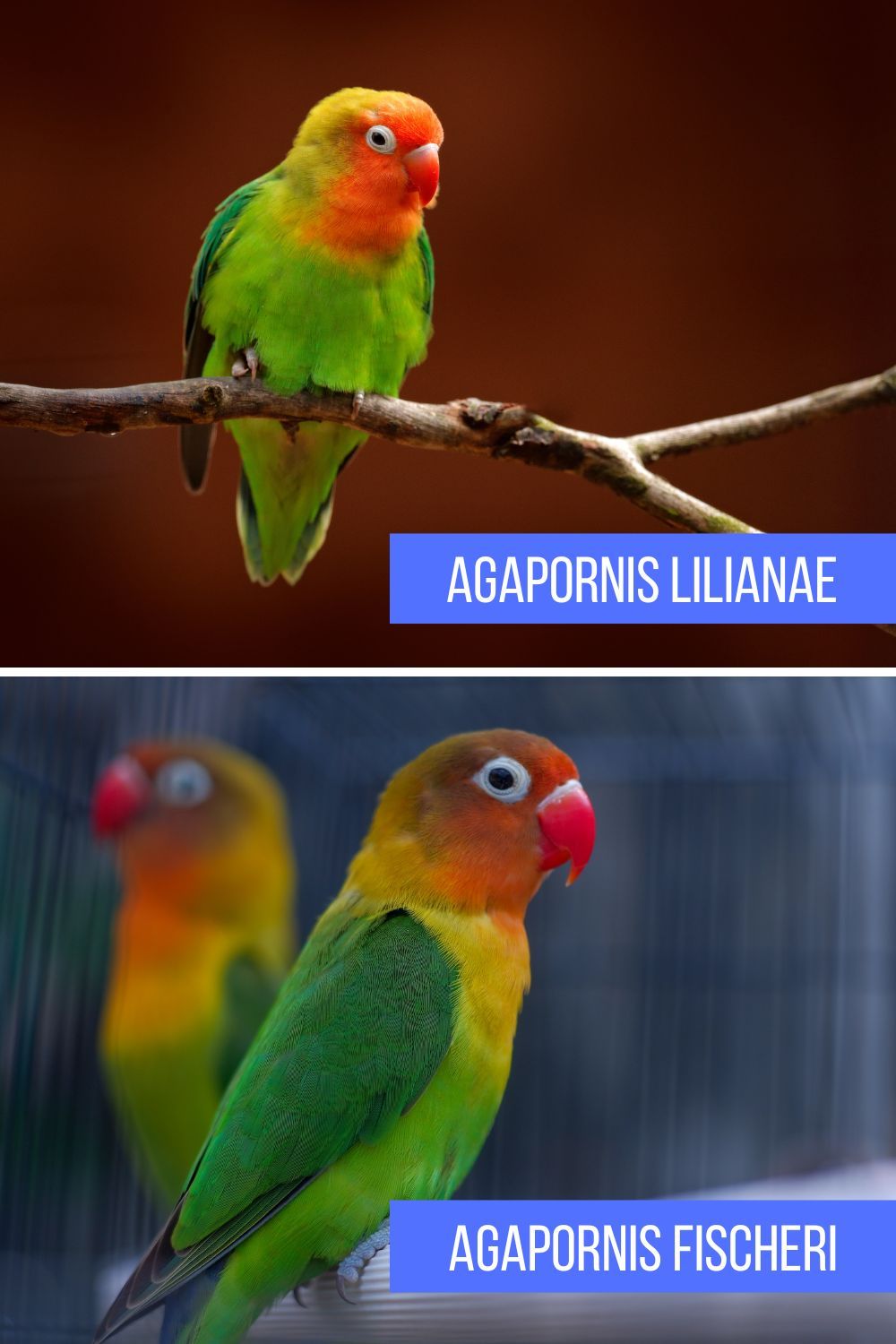
Lilian’s lovebird range & natural habitat
Like all nine members of the genus Agapornis, this one is naturally found in Africa. Its common name, Nyasa lovebird, gives away where it’s from: it refers to a people (as well as a lake) in the Malawi-Tanzania-Mozambique region.
The species also pops up in Zambia and Zimbabwe, and feral populations apparently exist in Namibia.
In their natural habitat, Nyasa lovebirds are pretty particular about where they live. They’re considered mopane woodland specialists, although they’re also found in Acacia woods, particularly in river valleys and other low-altitude areas near water. They live in flocks, foraging together during the day and sleeping in hollow trees.
This species is a colonial breeder. Nests are built in tree hollows and are usually inhabited by multiple pairs. They may also be shared with weaver birds (Bubalornis sp.), which is common practice for lovebirds.
Unfortunately, the Lilian’s lovebird is listed as Near Threatened in its natural habitat by the IUCN. The species’ numbers are thought to be decreasing, owing to a bunch of different reasons:
- Habitat loss
- Improper land management
- Trapping for the pet trade
- Poisoning by farmers, intentionally or as “collateral damage”. Up to 50 dead individuals were found around poisoned pools in one study.
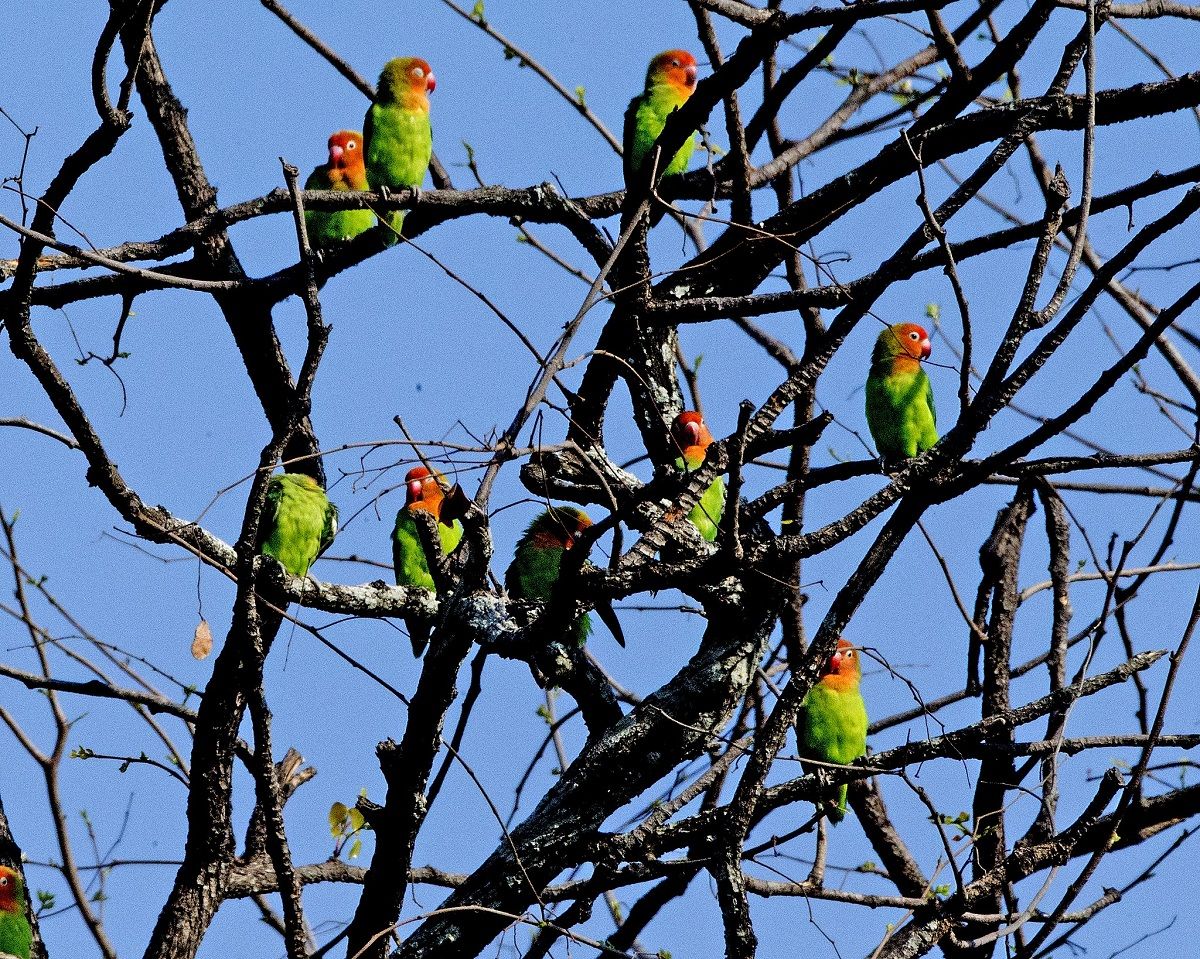
Lilian’s lovebird diet
Wild diet
In the wild, Lilian’s lovebirds are mainly seed eaters. Their large beaks are perfectly suited to cracking open even the toughest seeds! Grass seeds are their favorites, particularly wild rice, millet and sorghum. They also consume Acacia seeds.
Other foods commonly eaten by these parrots include various types of flowers and flower buds, leaf buds, wild fruits, and berries. A 2018 study observed Lilian’s lovebirds feeding on no less than 30 different plant species, so their natural diet is highly varied.
Captive diet
If you want to keep a Lilian’s lovebird as a pet, it’s important to feed a varied diet. Although the typical dry seed mixes can form a part of their daily meals, they’re too fatty and not nutritious enough to be a staple food. For that, you can use a high-quality parrot pellet instead.
Be sure to offer fresh veggies daily and fresh fruit on a regular basis. Aside from this, you can add variety with foods like:
- Sprouted seeds
- Cooked grains like rice and pasta
- Cooked legumes like lentils
- Foraged foods like dandelion leaves (pesticide-free)
- Treats like pieces of almond or millet sprays
Your bird should also always have access to a calcium block or cuttlebone. You can find plenty more inspiration in the full post on parrot diet, which is full of meal ideas that will help keep your lovebird healthy and well-fed.
Don’t forget to keep fresh water available at all times, preferably multiple sources.
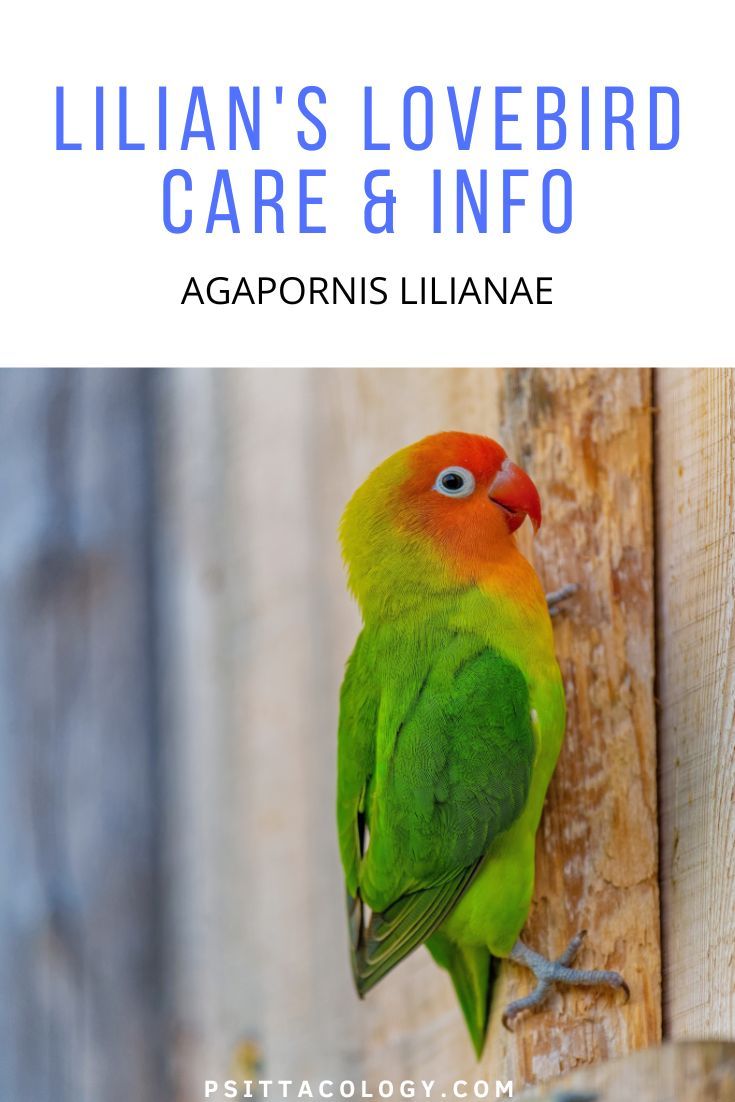
Lilian’s lovebird housing
If you’ve managed to acquire a Lilian’s lovebird, it’s important to provide a large cage. In fact, these parrots are usually kept in an (outdoor) aviary set-up! They’re active and need to be able to fly and climb.
If you do keep your Lilian’s lovebird in a regular parrot cage, I recommend going for something that’s at least 36″ in length. Include a variety of natural perches, ladders and other fun items for your bird to climb and explore.
Lilian’s lovebird enrichment
Like all parrots, Lilian’s lovebirds are active and highly intelligent. Boredom is a big issue in domestic birds, as is obesity due to lack of activity. That’s why you should give your lovebird plenty of stuff to do!
The good news? Parrots are pretty easily entertained:
- Toys: Keep a variety of lovebird toys in your Lilian’s cage and rotate them on a regular basis to keep them new and exciting.
- Out-of-cage time: Parrot-proof the room and let your lovebird out of its cage for at least a few hours a day. You can provide a play gym for it to hang out.
- Training: Spend time taming and training your bird in order to challenge its smart brain and strengthen your bond.
- Socialization: You should only keep a solo lovebird if you’re able to spend most of the day with it. If you work a normal 9-5, your parrot will need a friend.
- Bathing: Regularly provide a dish filled with water for your bird to bathe in, or see if it likes to be misted with a spray bottle.
- Foraging: Making your parrot work for its food is a fantastic way to keep it busy.
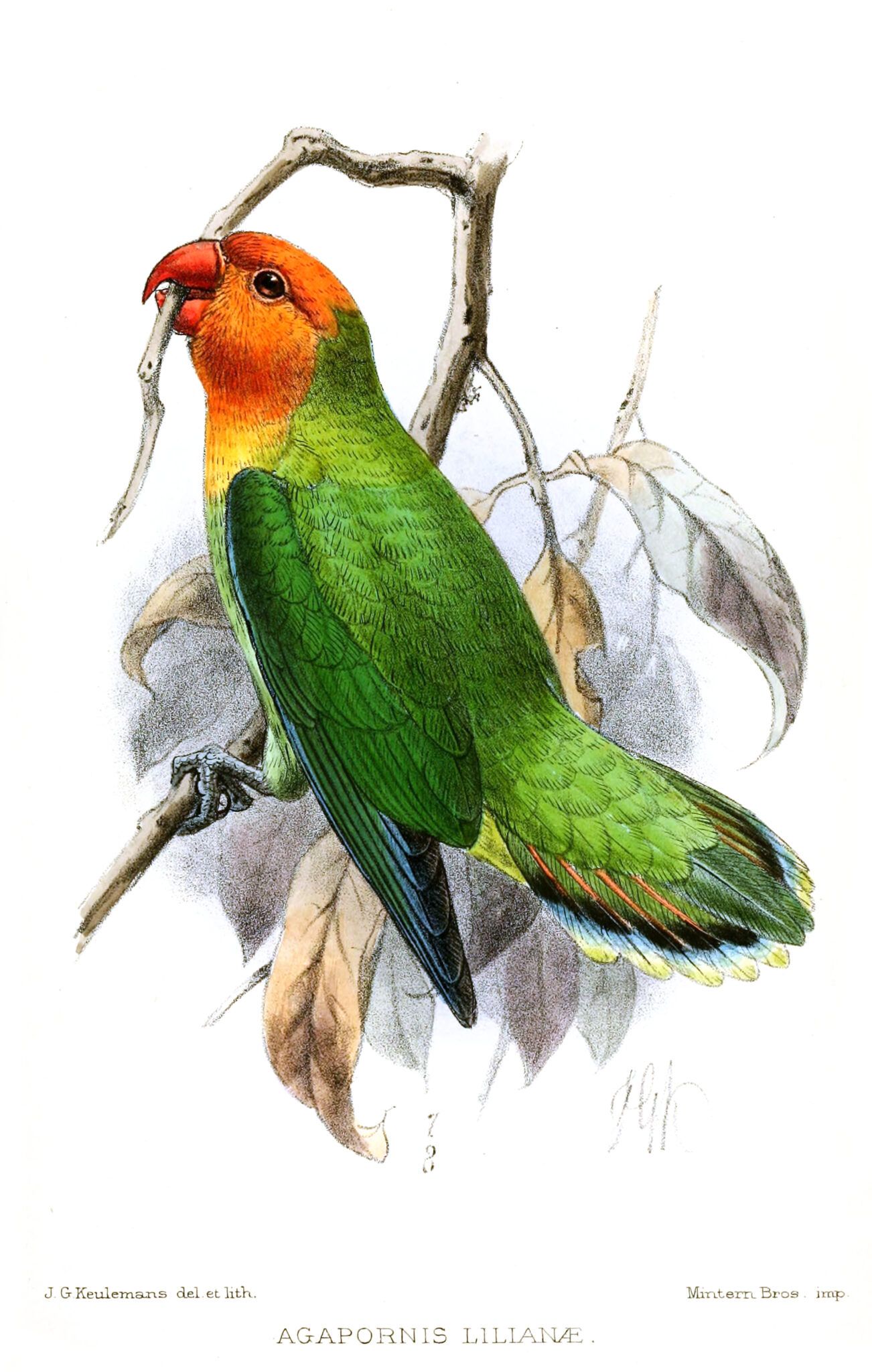
Lilian’s lovebird temperament
Lovebirds are true little pocket rockets. Intelligent, feisty and playful, they’re seemingly always on the go! At the same time, they can form strong bonds with their owners and need lots of attention.
One thing to keep in mind about lovebirds like this species is that if you want to keep your bird as a house pet, it’s important to keep working on training. Untame lovebirds can be bitey.
Lilian’s lovebird sounds
Although lovebirds are by no means the loudest parrots, their calls are shrill. If you’d like to keep a Lilian’s lovebird, it’s important to consider whether you can handle the non-stop stream of chatter. Play the embedded video below to have a listen!
Lovebirds in general aren’t the best talkers, so don’t expect much from your Lilian’s in this department. They can learn to imitate some simple sounds, but as described in the guide to lovebird talking, their vocabularies don’t tend to be very extensive.
Safety & emergencies
Unfortunately, small parrots like the Lilian’s lovebird are fragile creatures. Safety and what to do in emergency situations should be on your mind. For example, scented items like candles, perfumes, essential oils, air fresheners and the like are toxic to parrots and can kill them.
Additionally, don’t forget to take your bird to an avian vet for a check-up after buying it. After this, you should ideally repeat the check-up every year.
If you have any more questions about Lilian’s lovebirds or if you’d like to share your own experiences with these colorful small parrots, don’t hesitate to leave a comment below!
Sources & further reading
- Mzumara, T. I. (2014). The ecology and conservation biology of Lilian’s lovebird Agapornis lilianae in Malawi (Doctoral dissertation). (Very comprehensive and informative article!)
- Mzumara, T. I., Perrin, M. R., & Downs, C. T. (2018). Feeding ecology of Lilian’s Lovebird Agapornis lilianae in Liwonde National Park, Malawi. Ostrich, 89(3), 233-239.
- Parr, M., & Juniper, T. (2010). Parrots: a guide to parrots of the world. Bloomsbury Publishing.

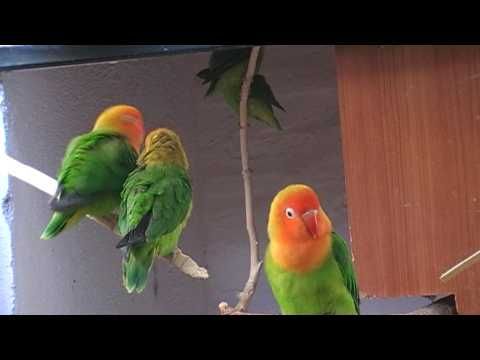
How can you tell the sex if Male or female.
As discussed in the article, it’s not possible to visually sex a Lilian’s lovebird. You’ll have to do a DNA test to be sure. You can find out more in the article on how to tell if a lovebird is male or female. Good luck 🙂